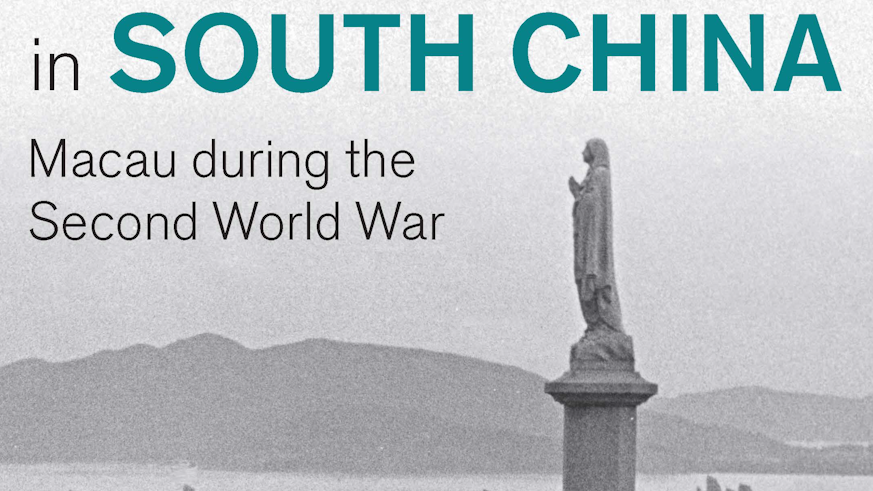Collaboration and neutrality beyond Europe
15 August 2023

Twilight zone between war and peace: Macau revealed
Histories of neutrality and collaboration in the Second World War tend to focus on Europe, often ignoring the dynamics in Asia on this global conflict.
Historian Dr Helena Lopes plays her part in redressing this imbalance with a close look at Macau, a small enclave that remained neutral throughout the war in East Asia in her first book Neutrality and Collaboration in South China: Macau during the Second World War out this summer.
With a combined land mass of only 15 km2, Macau’s population trebled to half a million people during the war. Refugees hailing from mainland China and Hong Kong profoundly shaped the wartime experience of Macau, in turn influencing its post-war future.
Although connected to other foreign-ruled territories in China, such as the British colony of Hong Kong or Shanghai’s foreign concessions, Macau became China's last remaining neutral gudao 孤島 or lone island: a colonial remnant surrounded by Japanese-occupied lands and waters and a base for both resistance and collaboration.
Despite notions of impartiality and inaction associated with neutrality, 1930s and 1940s Macau was marked by great ambivalence and constant links to wartime circumstances. Cross-border circulation – whether people, goods or information - made Macau relevant, enabling connection between occupied and unoccupied areas both in China and further afield. Macau too was shaped by global connections from diplomatic conversations in Lisbon, London or Paris to contacts with refugees’ relatives in Asia, the Americas and Australia.
Drawing on significant research with multilingual archival sources in Asia, Europe, Australasia and the Americas, Dr Lopes explores the uses and abuses of neutrality in Macau, interweaving international, imperial and social history. In her research she has explored how neutrality generated multiple and intersecting layers of collaboration and a range of international connections.
Her book covers a range of interactions involving Chinese nationalists , communists and collaborators with Japan, British and Japanese representatives, Portuguese officials, local intermediaries and multinational communities of refugees. It sheds new light on refugee histories, on Chinese wartime diplomacy with a small European power and on the plural practices of collaboration in a non-occupied territory. It also firmly places Macau – the first and last European colonial settlement in China – in histories of China’s foreign relations and imperialism in East Asia.
The ambiguities of neutrality in Macau represented both an opportunity for those engaged in anti-imperialist resistance against Japan and a challenge to decolonisation in China, especially in the post-war period. By reassessing the importance of Macau’s wartime connections to Hong Kong, the book also sheds light on overlooked aspects of Allied resistance in South China.
Dr Lopes expands:
‘Like French-controlled Casablanca in the eponymous 1942 Hollywood film, Portuguese-administered Macau was a site of waiting, connections, danger, opportunity, and unlikely friendships. It was a twilight zone between war and peace: the site and the subject of a plethora of encounters and interactions between refugees, diplomats, spies, resistance activists, collaborators, colonial officials, businessmen, smugglers, and many others.’
Lecturer in Modern Asian History Dr Helena Lopes is particularly interested in the international, political and social history of the Second World War and the early post-war period in South China, including imperialism, anti-imperialism, migration, displacement and refugees.
Neutrality and Collaboration in South China: Macau during the Second World War is out now with Cambridge University Press.
